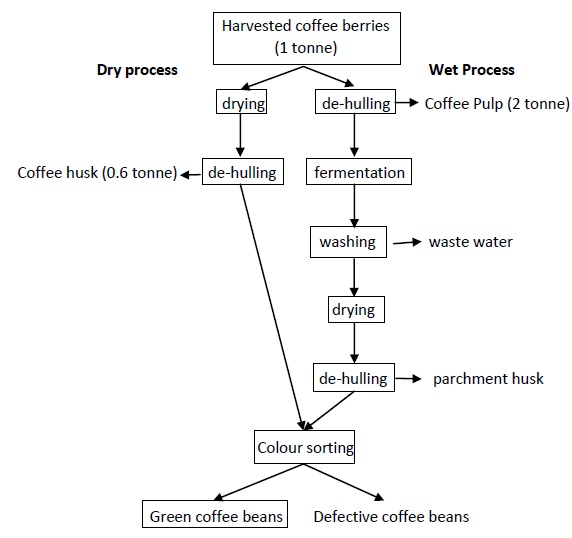Harvesting is the first step in the coffee processing flow chart. Coffee cherries are hand-picked from the trees when they are fully ripe. This ensures that the coffee beans inside the cherries are at their peak flavor. The cherries are then sorted to remove any damaged or unripe ones.
After sorting, the cherries are either processed using the dry method or the wet method. In the dry method, the cherries are spread out to dry in the sun, while in the wet method, the cherries are pulped to remove the outer layer before being fermented and washed. Once the cherries are dried to the right moisture content, they are ready for the next step in the coffee processing flow chart.
Coffee Processing Flow Chart
Processing
After the cherries have been harvested and dried, the next step in the coffee processing flow chart is processing. This step involves removing the outer layers of the dried cherries to reveal the coffee beans inside. The beans are then sorted and graded based on their size and quality.
Once the beans have been sorted, they are either roasted or stored for later use. Roasting is a crucial step in the coffee processing flow chart, as it brings out the flavors and aromas of the beans. The beans are roasted at high temperatures for a specific amount of time to achieve the desired roast profile.
Grinding and Brewing
After the beans have been roasted, they are ready to be ground and brewed into coffee. Grinding the beans into a fine powder allows for maximum extraction of flavors during the brewing process. The ground coffee is then brewed using various methods, such as drip brewing, French press, or espresso.
Each brewing method has its own unique characteristics that affect the flavor and strength of the coffee. The final step in the coffee processing flow chart is enjoying a freshly brewed cup of coffee made from beans that have been carefully harvested, processed, and brewed to perfection.
